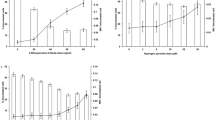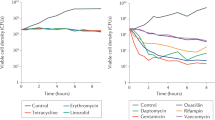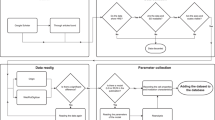Abstract
Lonidamine [1-(2,4-dichlorobenzyl)-1-H-indazol-3-carboxylic acid] is shown to inhibit recovery from potentially lethal damage after exposure of cells to X-rays, methyl methane sulfonate, or bleomycin and heat (43 degrees C, 1h). Inhibition is most effective when the drug is present before and after exposure of 10 to 25 mg l-1, a concentration readily achievable in vivo.
This is a preview of subscription content, access via your institution
Access options
Subscribe to this journal
Receive 24 print issues and online access
$259.00 per year
only $10.79 per issue
Buy this article
- Purchase on Springer Link
- Instant access to full article PDF
Prices may be subject to local taxes which are calculated during checkout
Similar content being viewed by others
Rights and permissions
About this article
Cite this article
Hahn, G., van Kersen, I. & Silvestrini, B. Inhibition of the recovery from potentially lethal damage by lonidamine. Br J Cancer 50, 657–660 (1984). https://doi.org/10.1038/bjc.1984.232
Issue Date:
DOI: https://doi.org/10.1038/bjc.1984.232
This article is cited by
-
Relative cytotoxicities of Adriamycin and epirubicin in combination with lonidamine against human bladder cancer cell lines
Urological Research (1995)
-
Modulation of antitumor alkylating agents by novobiocin, topotecan, and lonidamine
Cancer Chemotherapy and Pharmacology (1993)
-
In vitro potentiation by lonidamine of the cytotoxic effect of adriamycin on primary and established breast cancer cell lines
Breast Cancer Research and Treatment (1992)
-
Fluosol-DA/carbogen with lonidamine or pentoxifylline as modulators of alkylating agents in the FSaIIC fibrosarcoma
Cancer Chemotherapy and Pharmacology (1991)
-
Effect of lonidamine on the cytotoxicity of four alkylating agents in vitro
Cancer Chemotherapy and Pharmacology (1989)



